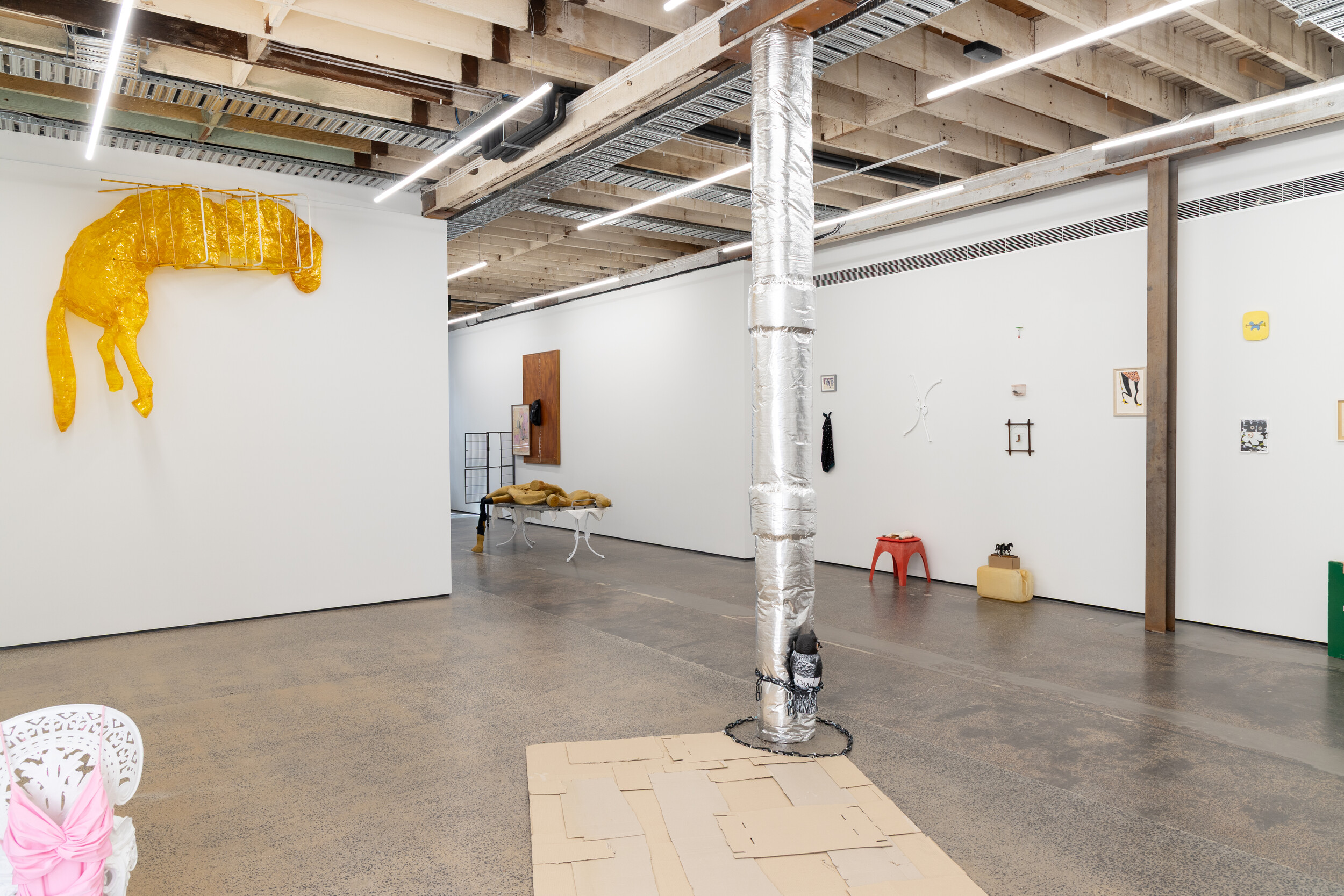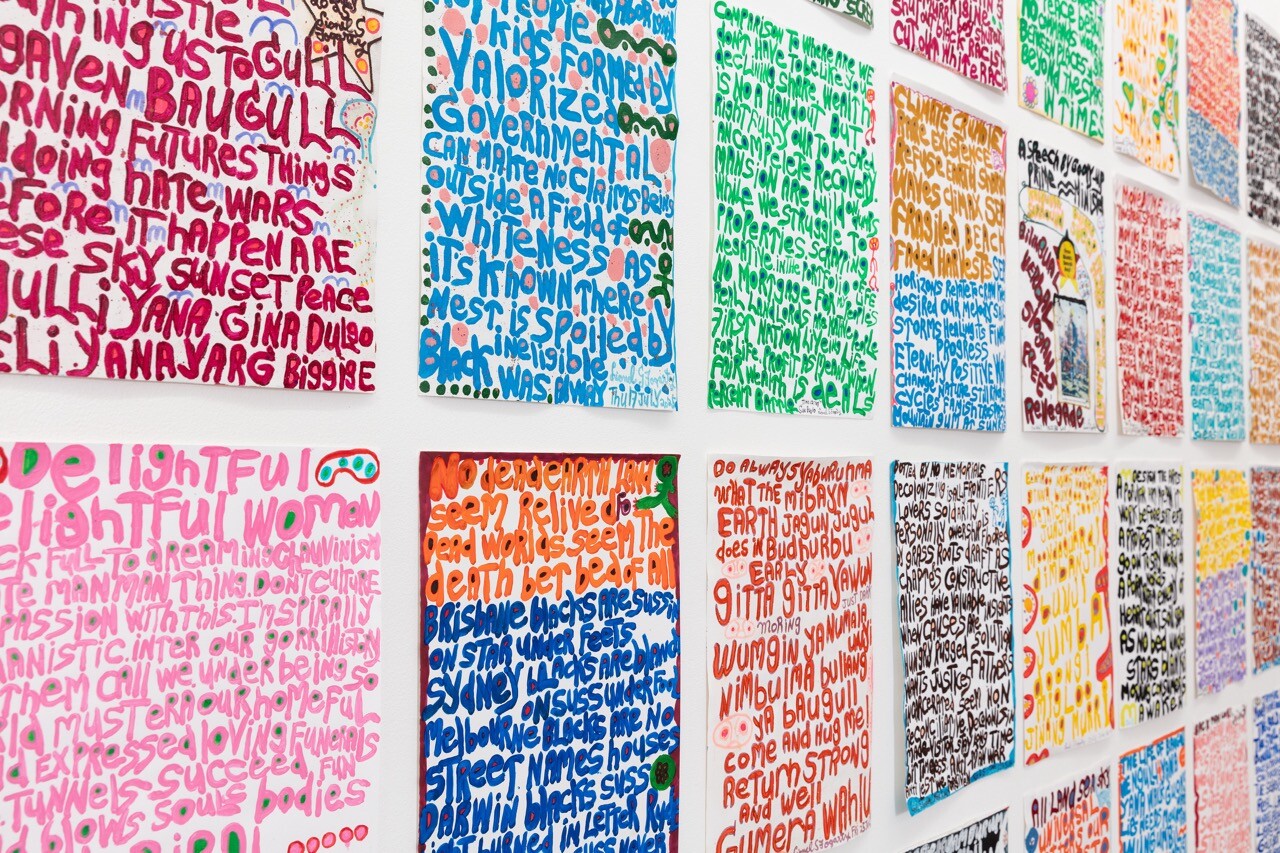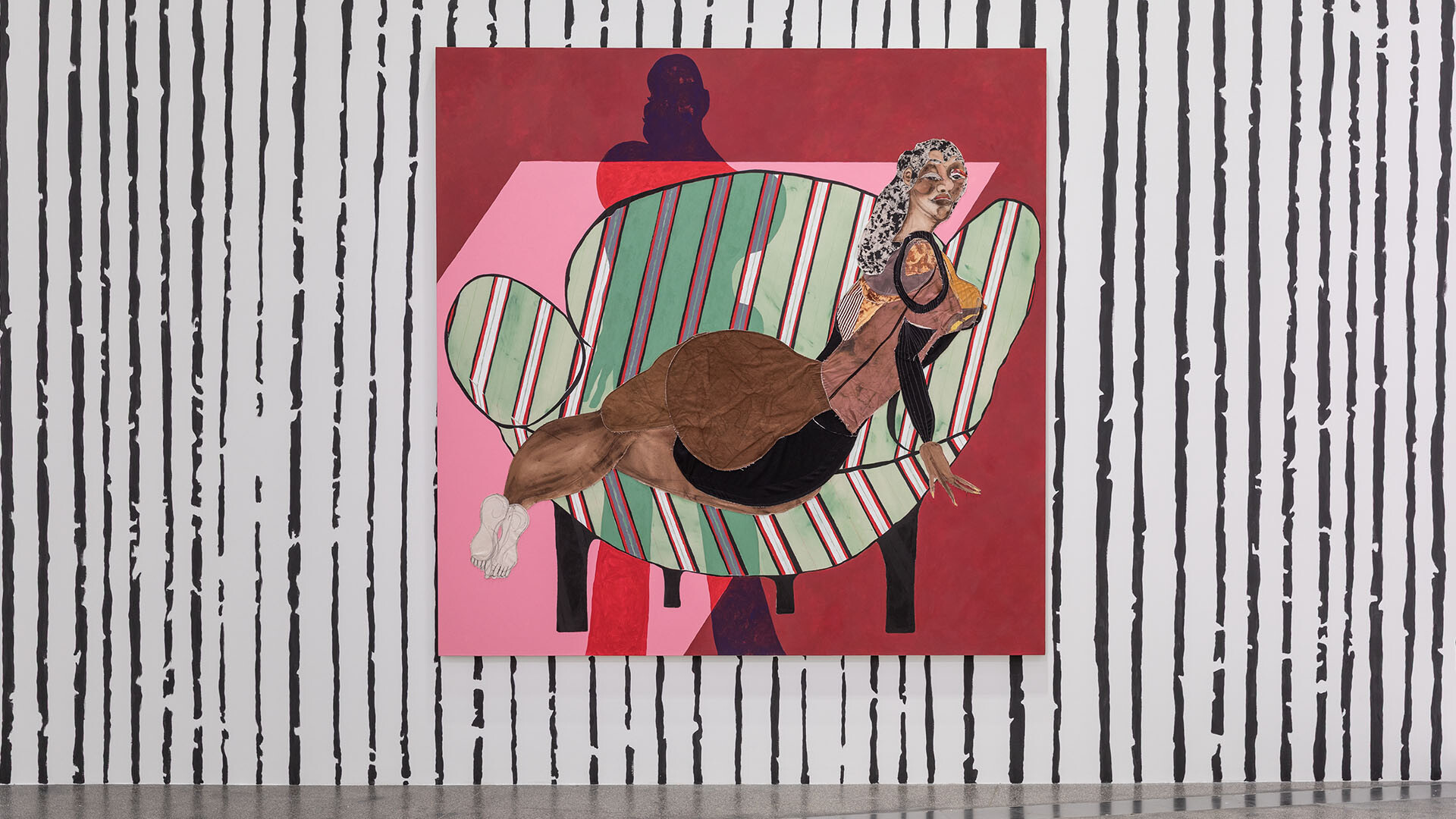Khaled Sabsabi, Thank You Very Much (still), 2006, Single channel SD video with audio. Courtesy the artist and Milani Gallery, Brisbane.
Khaled Sabsabi, Thank You Very Much (2006)
Rex Butler and Paris Lettau
Let’s start with the work, as they always tell us to do in art history. It’s Thank You Very Much (2006), an eighteen-second video piece by Khaled Sabsabi. It’s a rapid-fire montage of eyewitness footage capturing the planes flying into the World Trade Center, followed by then-President George W. Bush saying the words “Thank you,” which give the work its title.
The footage is haphazardly cut up and scrambled, unwinding in jerky and jittery fast-forward, as though stored on some glitchy server or caught in fugitive memory. You can’t watch it straight or directly, as though the attack was happening before your eyes—which was the terrifying sense of watching it for the first time for those old enough to remember—but are always aware that it is recorded, selected and historical, as though it belonged to some imperfect and rapidly degenerating archive.
And then there are the words. The final seconds of the work conclude with a clip from a speech given by Bush a few days after the strike, in which he—taking a gratifyingly unifying approach, despite the fear and panic of the American people at the time—thanked the people of New York for their “bravery and for carrying on.” At this point, he had not yet publicly discussed the idea of invading Afghanistan to root out al-Qaeda (sound familiar?). It was still about three weeks before the actual invasion and occupation would begin.
Of course, it was a disastrous mission, which was undertaken with the support and military aid of America’s allies, including Australia, Britain, and France. Four years ago, at the beginning of his Presidency, Joe Biden finally withdrew the last of the American troops, ceding control of the country to the Taliban still locked in a complex contest with al-Qaeda, with its horrific levels of repression of women, persecution of ethnic minorities, and suppression of free speech, leading to the country now largely being excluded from the international community.
The almost twenty-year-long war cost the lives of thousands of allied troops and an untold number of Afghan civilians, as well as members of al-Qaeda and the Taliban. It counts as one of the great military catastrophes of all time (alongside the contemporary Iraq War, of course), which all kinds of experts warned would fail in advance. Every Australian Prime Minister, from John Howard, who originally joined us up, through Kevin Rudd, Julia Gillard, Tony Abbott, Malcolm Turnbull, and Scott Morrison, who continued to allow our troops to fight and die for such an unwinnable cause, deserve permanent opprobrium and almost to be “cancelled.”
As we say, Bush’s “Thank you very much” in its final few seconds gives the work its title. It’s easy—and clearly very tempting—to think that it’s Sabsabi saying thank you to al-Qaeda for attacking the West for all of the crimes and injustices committed by it around the world. But this would be to ignore that it’s actually Bush saying, “Thank you,” with the provocative implication that it is he who is grateful for the attack because it will allow him the excuse to invade Afghanistan (and eventually Iraq again). It will give his otherwise pointless and directionless Presidency—the unspoken truth of all Western democracies today—a purpose and meaning, some “enemy” in the battle against whom he can unite the people or at least win the next election. (Sound familiar, both sides of politics, here?)
So the work is ambivalent or, to put it in artspeak, ironic. It’s not quite so easy to say what it is saying because it’s actually saying two opposed things at once. And it’s not so easy to say what Sabsabi himself is saying because he is saying it through other people. If the work seemingly “celebrates” the al-Qaeda attack on New York, it is also only echoing Bush’s own gratitude for the attack in allowing him to invade Afghanistan. If it can be understood to be offering “support” for al-Qaeda, it’s also a critique of them for justifying Bush’s subsequent invasion. But, if Sabsabi therefore appears to be echoing Bush, he’s also pointing to the cynicism and arbitrariness of his reasoning: that he needed an attack by al-Qaeda to justify the “democratic” liberation of Afghanistan and Iraq.
And it is this ambivalence that makes the work. It can appear to be making criticisms of every possible understanding of the conflict: Islam for allowing those attacks that led to the invasion of Afghanistan; America for using these attacks as an excuse to “liberate” an oppressed people. But it is also critical of itself. Thank You Very Much is not a simple piece of propaganda or readable as one-sided because—and it is this that has been overlooked in all recent discussion of the work—it is actually Bush who is saying thank you, not the artist or Osama Bin-Laden or anybody else.
All of this is what any proper, responsible reading of the work has to take into account. You can argue with it—we are about to do so ourselves—but you have to pay it the proper attention, although it is this “proper attention” that is disappearing in today’s culture, and not just in our daily newspapers and Federal Parliament. And it is exactly this failing “attention economy” that Thank You Very Much, in its brevity and “controversy,” both is about and seeks to take into account.
It is undoubtedly a challenge to suggest that Bush was somehow grateful for 9/11. It is a complex and provocative argument that the work—and, really, any work of art—cannot properly make. But it was a hypothesis, or something close to it, put forward by the French sociologist Jean Baudrillard in his almost contemporary meditation on the event, The Spirit of Terrorism (2002), in which he writes:
At a pinch, we can say they did it, but we wished for it … The fact that we have dreamt of this event [he is speaking of all those Hollywood movies depicting the destruction of New York], that everyone without exception has dreamt of it—because no one can avoid dreaming of the destruction of any power that has become hegemonic to this degree—is unacceptable to the Western moral conscience. Yet it is a fact, and one which can indeed be measured by the emotive violence of all that has been said and written in the effort to dispel it.
What Baudrillard says here is shocking, upsetting, but almost undeniable, by which we mean that, although you think you can refute it, it keeps on coming back as a possibility. (Does it not explain, for instance, why Americans recently knowingly voted for the destruction of their country? Or why right-wing newspaper columnists incessantly fantasise about the collapse of Western civilisation? They actually want it.) It has the power and freedom of great thought: to say what has previously remained unsaid in order to make us think again. It’s the great—we’re tempted to say only proper—Western value: the freedom of thought. And Baudrillard, for one, for all of his “radicality,” never denied that he came out of and was inspired by the long lineage of Western thought.
The big problem with Thank You Very Much—and it is the exact opposite of the one it has been accused of—is that its ambivalence seems a little unearned. It’s the classic tone of irony that characterises so much contemporary art: it covers all the bases by appearing to argue against itself. That’s why it’s very hard to pin down what Sabsabi’s actually saying. (And it’s exactly this, we would say, that made the artist a very suitable candidate for the Venice Biennale until things blew up in Creative Australia’s face.)
You precisely cannot accuse Sabsabi of arguing for one side or another because the work can always be seen to be arguing for the other. It’s provocative, but we might also contend that it’s emptily provocative.1 It entirely gets the controversialist news cycle that all culture is necessarily part of today, that all works of art must participate in if they want to attract our attention, but it does not in any way question or seek to step out of this cycle.
That is, at first glance, or to those who haven’t seen the work—and you can bet that most of the people who have spoken about it haven’t actually seen it—it might appear that it is polemical and provocative, but actually it’s more like the artist throwing his hands up in the air and saying I don’t know if anybody is right. Both sides are complicit; both play into each other’s hands. But this is offered without any sense of Baudrillard’s rigour in his suggestion that what it points to is the impossibility of any single principle or political system dominating the world, that “terrorism” is the internal limit of, say, Western ideology seeking to get rid of all external obstacles. This is perhaps the work’s true “irresponsibility”: not in what it says, but in what it does not or cannot say. But then, in another way, we shouldn’t expect this from art. Art is not a form of philosophy. Rather, in its most general sense, it is like a form of “virtue-signalling”: a way of starting or joining a conversation without necessarily having something particular to say, or at least without knowing in advance what you are going to say or what is going to be said on your behalf. (Indeed—sorry all—it’s a little like signing that Memo letter asking Creative Australia to reverse its decision without knowing exactly what should be done or whether it can actually be done.)
But obviously none of this justifies in the slightest what happened to Sabsabi. The fact that Creative Australia folded so quickly to critics without being able to offer its own explanation of the work demonstrates how empty and vacuous our arts institutions are today. The idea that one should withdraw a work because it might open a “prolonged and divisive” debate is a renunciation of everything that art stands for. Of course, art—at least good art—should be “divisive”: that means that someone has done something new, is able to split and divide us up in different and unexpected ways. That’s what proper art and thought does. And Thank You Very Much—and this would ultimately be our criticism of it—was not divisive enough, did not open up a properly “divisive” conversation. It just split us down the usual lines or, if read carefully, refused to divide us at all.
Everything has happened as though no one really knew why Sabsabi had been selected. As though no one on Creative Australia’s board had properly engaged with his work and could adequately explain it to others. They just “loved” it, as apparently Arts Minister Tony Burke once did, and then suddenly that love turned.
We could be wrong in what we are saying here, but at least we’re trying to engage with Thank You Very Much, spend some time with it, ask it some questions, let it respond and then make a judgement about it. This is what that engagement with art that Creative Australia notionally seeks actually is. And the work of art is a test for the person asking questions, one of the few ways we have any more of finding out who we are. You’re in dialogue with another, trying to give them the respect and attention they deserve. But, as we say, Sabsabi’s work is also about this new situation we are in, in which stereotypes and the demand for a quick response inhibit proper thinking. The work knows this about itself and tries to take it into account, plays itself on stereotypes and encourages an immediate response. No ambitious and worldly artist would do otherwise today, and in some ways Sabsabi got what he wanted or at least what his work wanted.
Could we pin a moment to the collapse of Western civilisation—the last moment America, as head of the free world, could have done the right thing? It would be when those buildings came down on 9/11, with all those works of art in them. And Bush, after first saying thank you to the firefighters, those who helped search for bodies beneath the rubble, and to all those around the world who sent America their best wishes, then deciding to invade Afghanistan in a second thank you, involving the “West” and “Islam” in a deadly mutual “terrorism” that lasts until this day.
And about a week ago in Canberra, the work hit Parliament. Those in the building could have done the right thing—but they decided to take the works of art down with them, thus involving us in another circular and endless squabble.
Thank you very much.
-
A similar ambiguity has been noted or at least has occurred with the other work by Sabsabi spoken of in Parliament, You (2007), which depicts former Secretary-General of Hezbollah, Hassan Nasrallah. The didactic for the work at the Museum of Contemporary Art (extraordinarily) has it: “Sabsabi has almost manipulated the video footage, obscuring Nasrullah’s face with beams of light that shine from his eyes and mouth, suggestive of a divine illumination.” By contrast, University of Western Sydney researcher Cecelia Cmielewski, who has also worked for Creative Australia, insists: “The people who have seen the work—myself included—it’s not deifying the leader at all. I interpret it as laser beams of hate coming out the sides frankly, not a Christian idea of haloes, which seemed to be what that senator implied.” Notably, The Australian newspaper, whose article on Sabsabi’s two works triggered the chain of events that led to him being dropped as the Australian representative to Venice, now says that “those works were at least ambiguous in their suggestion of any support for either” (19/2/2025). Maybe the two reporters have now actually looked at the works. ↩
Rex Butler and Paris Lettau are contributing editors at Memo.


